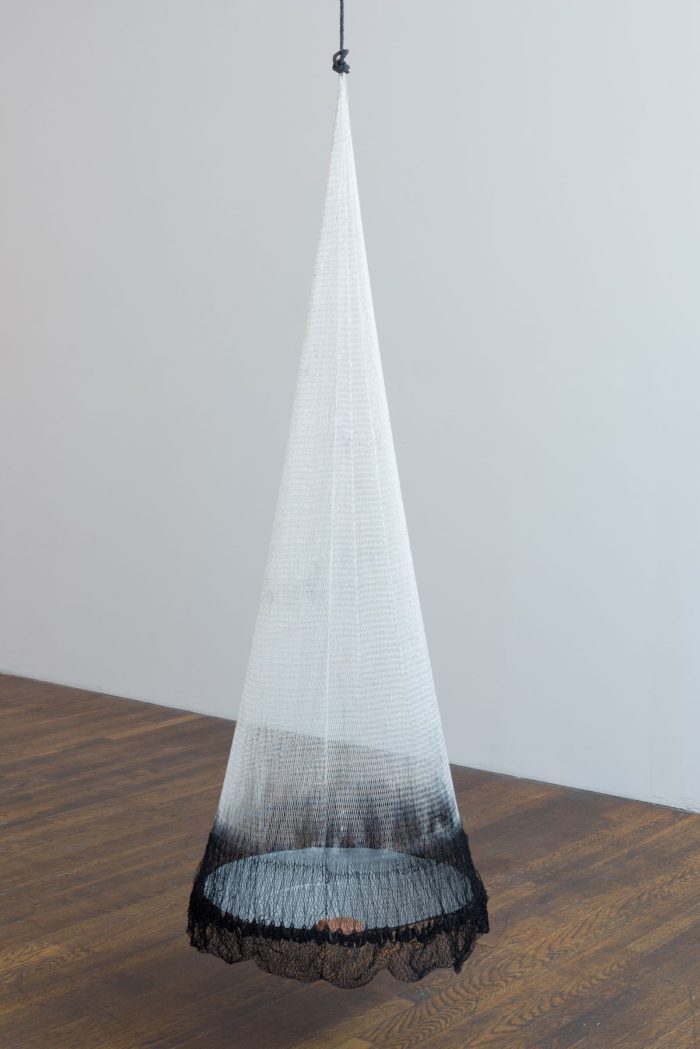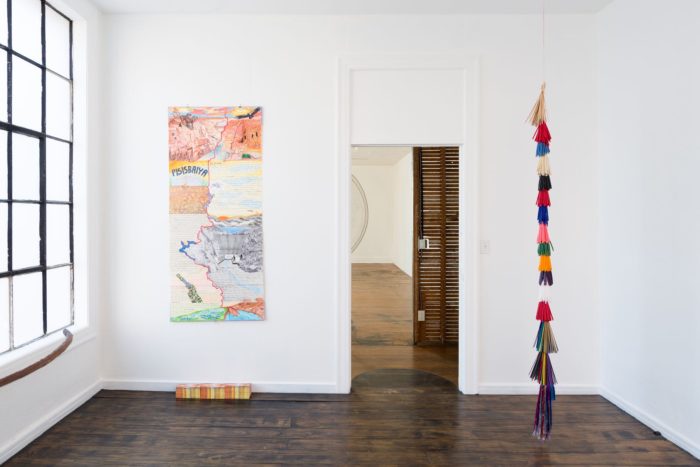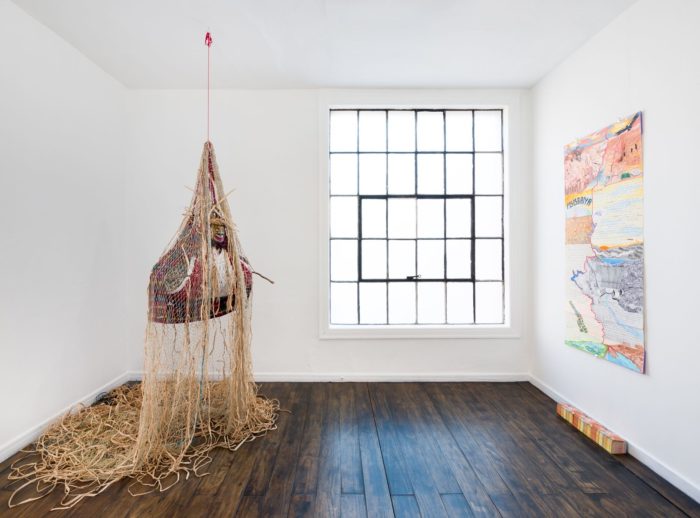Tiempo de lectura: 2 minutos

10.10.2017
Commonwealth & Council, Los Angeles, California, USA
9 de septiembre de 2017 – 21 de octubre de 2017



El hambre como maestra/Hunger as Teacher is part of Carolina Caycedo’s ongoing project Be Dammed in which she collaborates with riverside populations in various bio-regions to address the socio-environmental impacts of dams. While engaged in fieldwork and research, Caycedo gathers objects, film footage, and testimonies. She also produces drawings, collages, sculptures, and films that document and expand on these experiences. These elements form the basis of an investigation into the devastating ramifications of development as understood through the stories of those affected and their resistance.
Caycedo challenges the separation of the human and the natural, especially in highlighting correlations between the environmental crisis and the persistence of oppression. The human toll of both is a particular concern—close to 185 environmental activists were killed in 2016, amongst them Berta Caceres from Honduras and Nilce de Souza ‘Nicinha’ from Brazil. These women are memorialized through a collective portrait, with water protectors Zoila Ninco from Colombia and Raimunda Silva from Brazil who continue this fight. Fishing nets collected during fieldwork refer to the survival of indigenous traditions and the impact of modernity, and also serve as an homage to these women. When asked who had taught her to fish, Raimunda answered, “Hunger taught me to fish.”
This inherent bodily connection to water runs through the exhibition. The drawing Dam Knot Anus (2016) refers to an interview with Kogui indigenous spiritual leader Mamo Pedro Juan, who passed away last June, in which he described a dam as cutting off the connection between bodies of water and communities, like a knot in the veins, or, still worse, a knot in the anus. Also on view is the intrauterine device previously used as a contraceptive by Caycedo and subsequently removed in the process of “undamming” her own body, now transformed into a sculptural relic.
For this exhibition, Caycedo returns to Los Angeles and its own long-standing struggles with water and the power structures that direct its flow. A folktale written by the artist about the Colorado River is here illustrated and translated into Korean and Spanish. This is one of a series of river folktales by the artist—another effort to redirect and rewrite the history of water.
Comentarios
No hay comentarios disponibles.